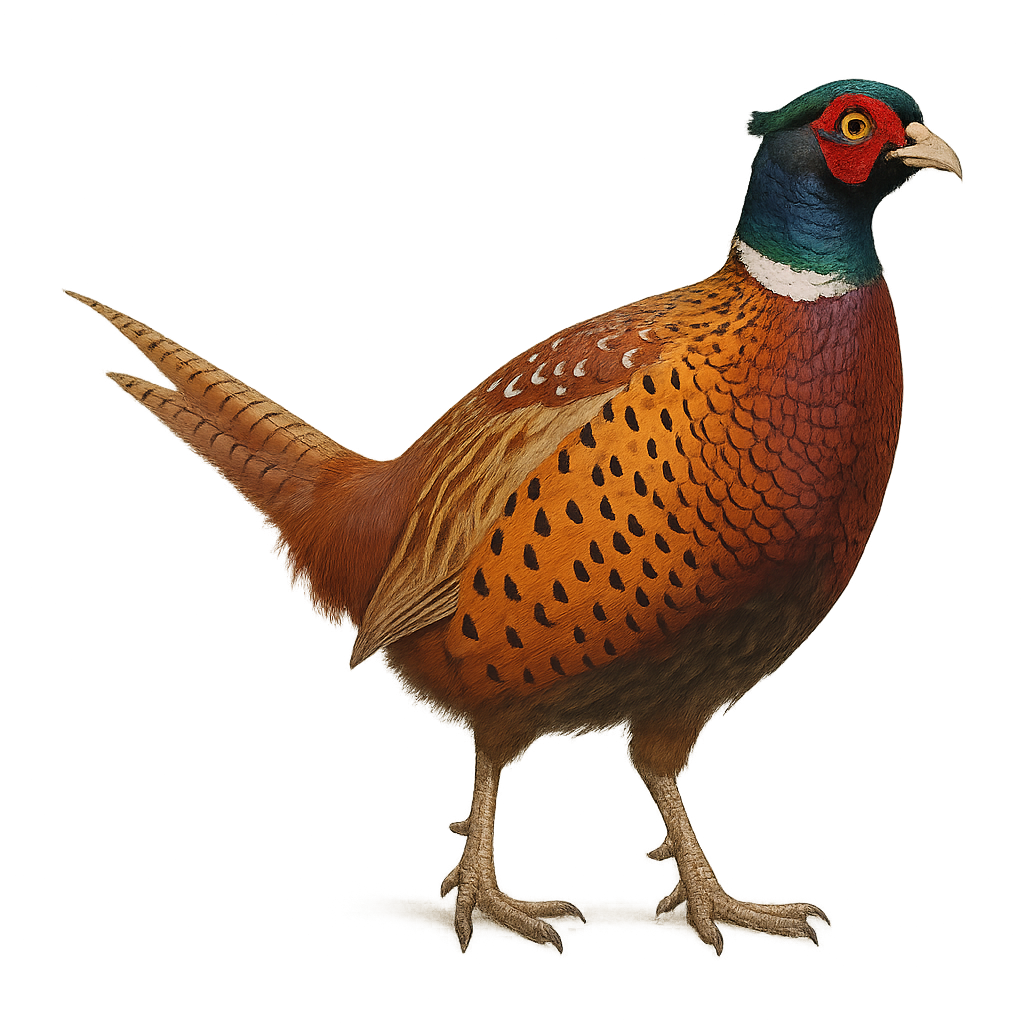Observe and photograph a species in its natural habitat
Learn where and when to observe a species in the wild, how to recognize it in the field, and what habitats it lives in. Get photography tips adapted to its behavior and capture stunning images without disturbing the animal. For full details, open the complete profile in the WildlifePhotographer app.
Colchis pheasant
Scientific name: Phasianus colchicus

IUCN Status: Least Concern
Family: PHASIANIDAE
Group: Birds
Shyness: Suspicious
Safe distance: 30 m
Breeding season / Courtship: 01.04-30.04
Gestation: 23 à 26 jours
Births: 24.05-26.06
Habitat:
Forests and woodlands
Description:
The Common Pheasant, or Colchian Pheasant, is a medium to large-sized bird, easily recognizable by its bright colors and silky plumage. The adult male is particularly spectacular, with shiny plumage in shades of green, red, gold, and blue, and a long tail adorned with fine feathers. It measures about 70 cm in length, most of which is its tail, and weighs between 0.8 and 1.5 kg. The female, more discreet, has brown spotted plumage that helps her blend into her surroundings. Native to Asia Minor and the Caucasus region, the Colchian Pheasant has been introduced to many parts of the world for hunting and decoration. It typically inhabits wooded areas, cultivated fields, and grasslands. Its diet is omnivorous, consisting of seeds, berries, insects, and sometimes small vertebrates. The species is mainly active at dawn and dusk. While the Common Pheasant is not threatened, it faces risks such as habitat loss, excessive hunting, and predation by carnivores.
Recommended lens:
>=300 mm
Photography tips:
Use a telephoto lens to photograph from a distance, respecting the discreet and sometimes elusive nature of the species.
Photograph early in the morning or late in the afternoon, when soft light highlights the metallic sheen of the male’s colorful plumage and the more subtle tones of the female.
Look for it in agricultural areas, meadows, forest edges, or hedgerows, where it feeds on seeds, berries, insects, and small invertebrates.
Be patient and discreet. Pheasants are often alert and tend to hide in tall grass or dense vegetation.
The Common Pheasant (Ring-necked Pheasant) is classified as Least Concern by the IUCN. Although it is widespread and often reared or introduced for hunting, it is still important to preserve its natural habitats to maintain healthy wild populations.
Ready to take action?
Choose your platform and start your free trial today



